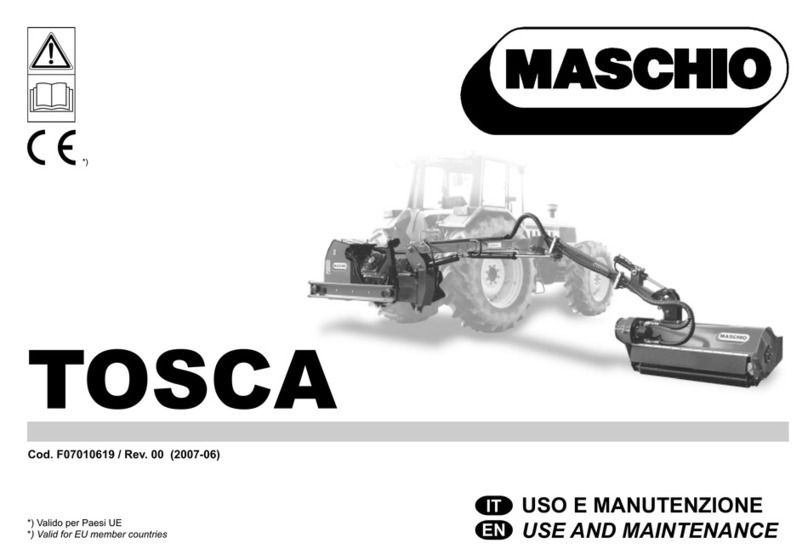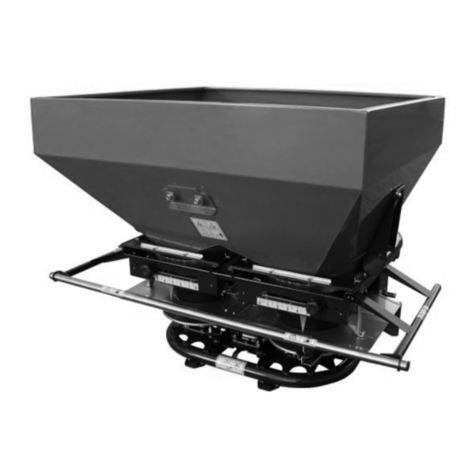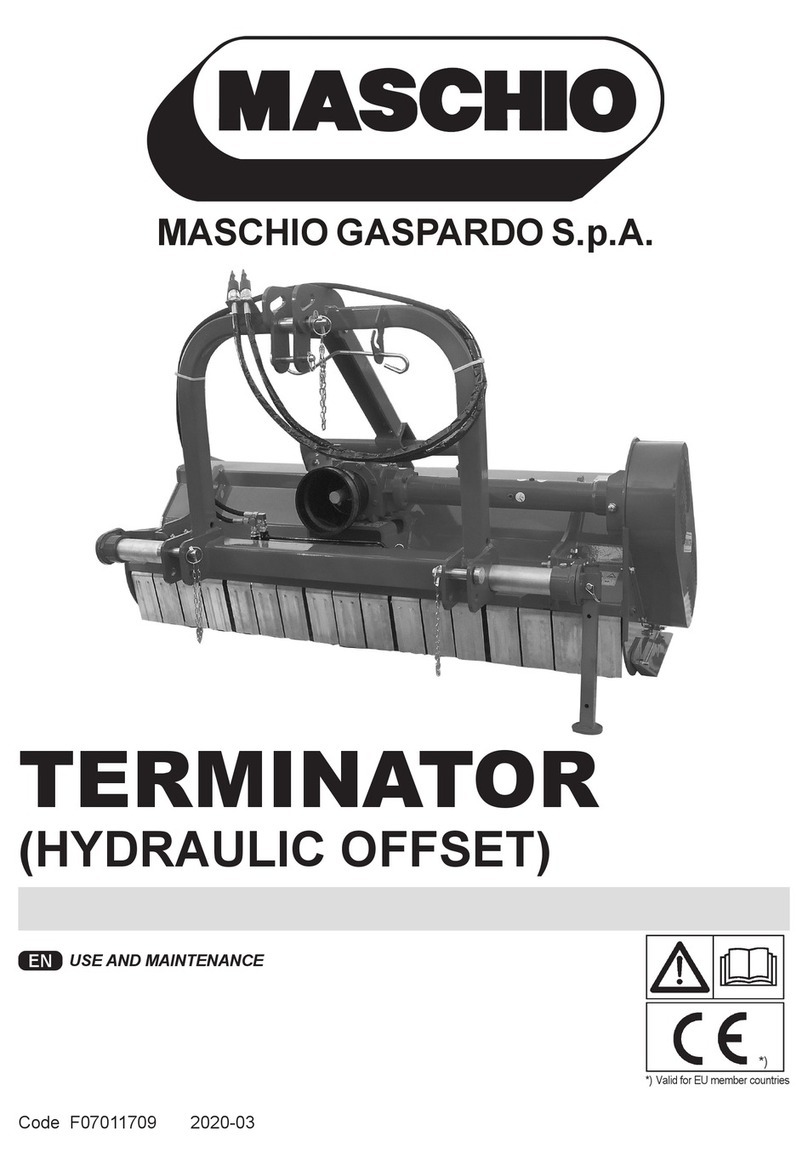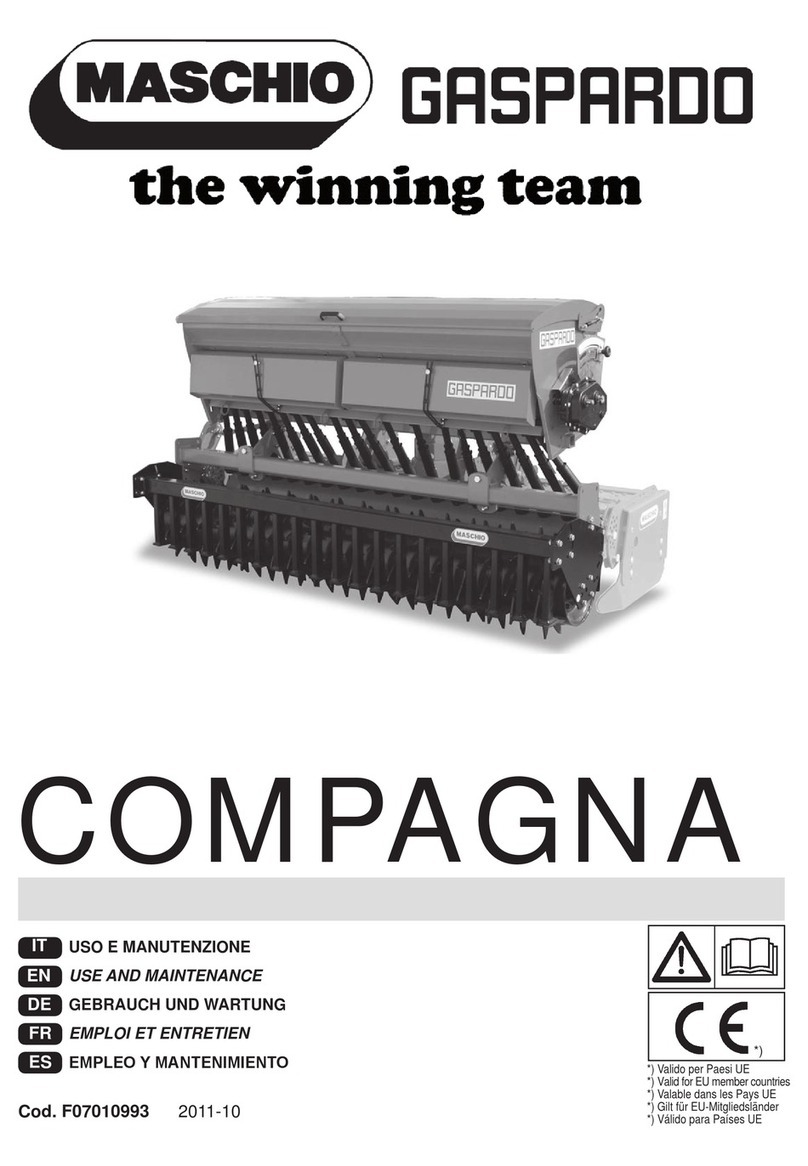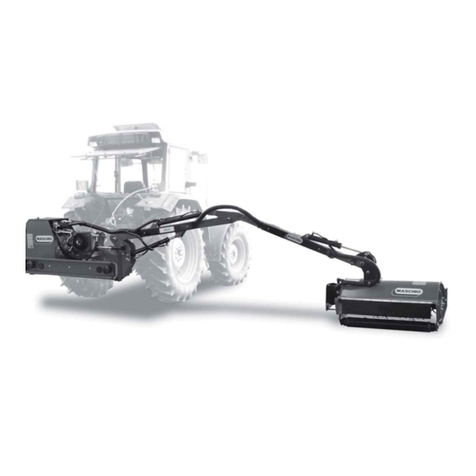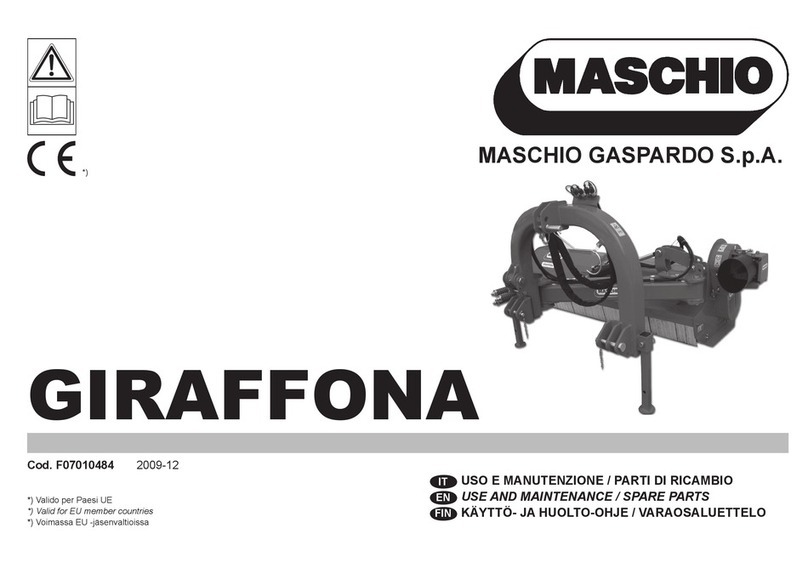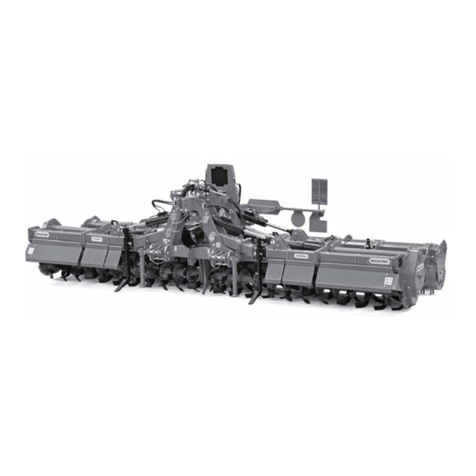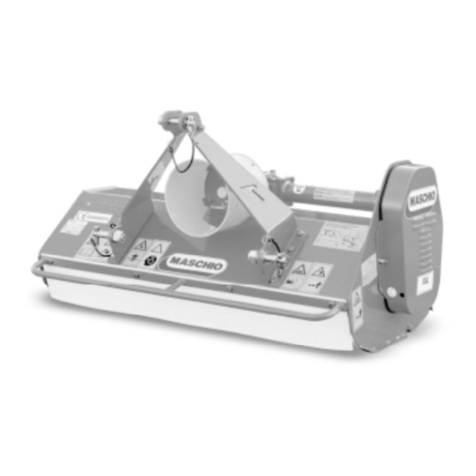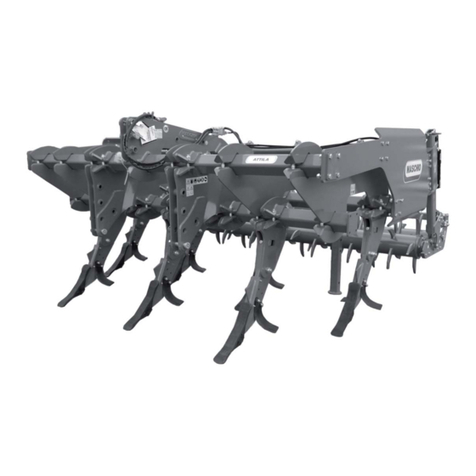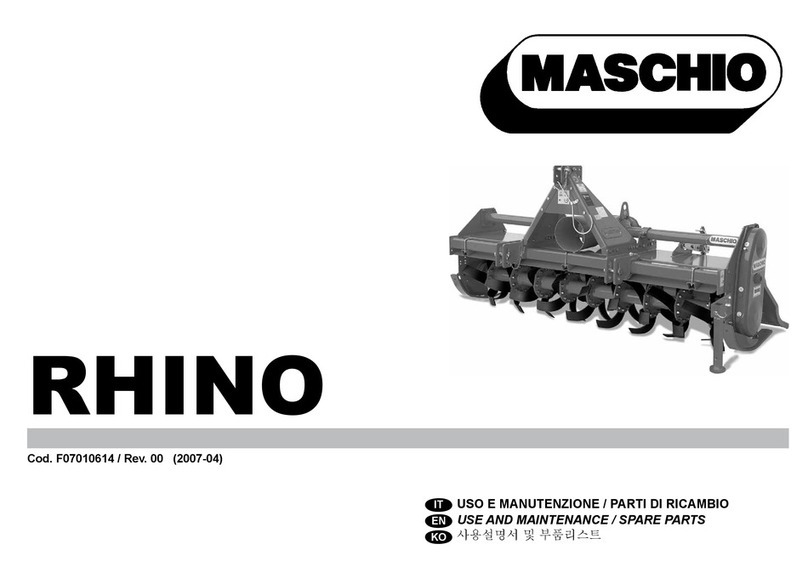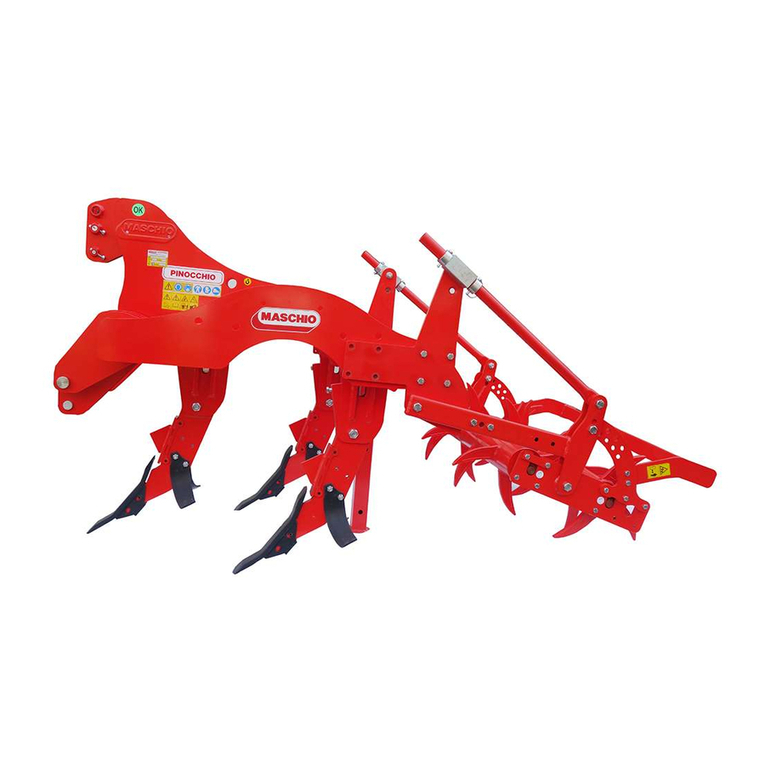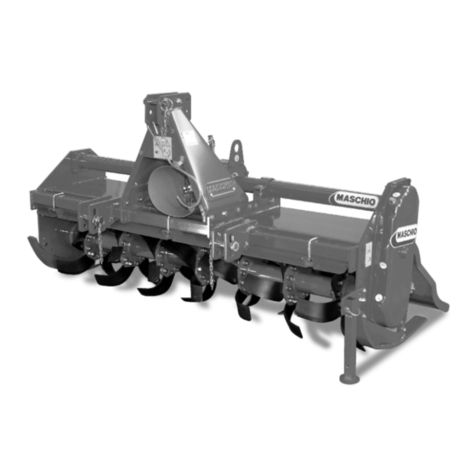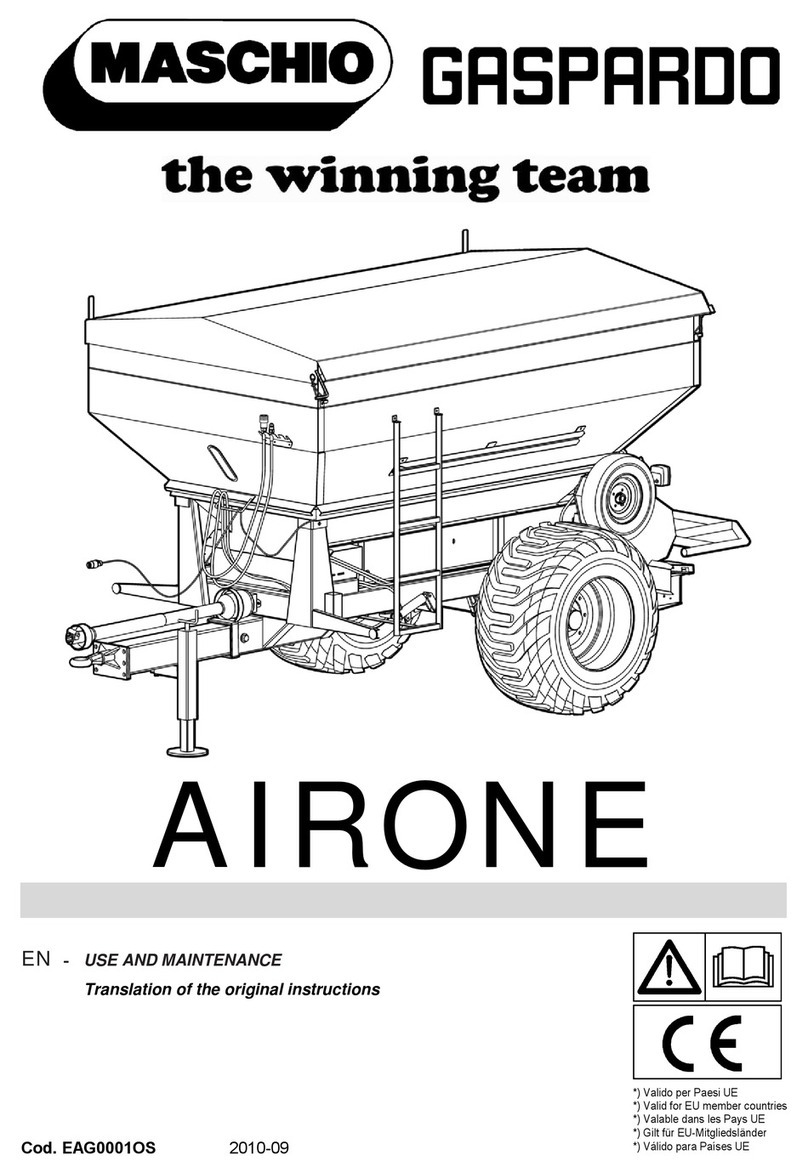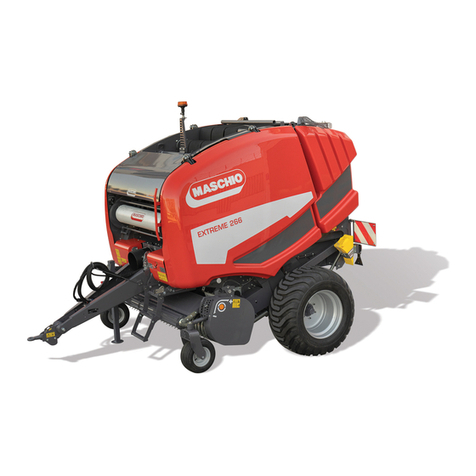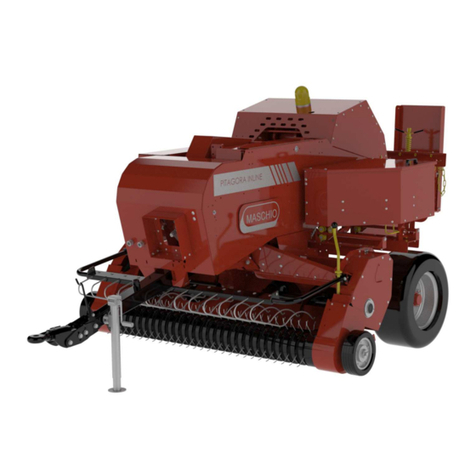
9
ITALIANO
ENGLISH
DEUTSCH ESPAÑOL
FRANÇAIS
14) Usareunabbigliamentoidoneo.Evi-
tareassolutamenteabitisvolazzanti
o con lembi che in qualche modo
potrebberoimpigliarsi in partirotanti
e in organi in movimento.
15) Agganciarelazappatrice,comepre-
visto, su di un trattore di adeguata
potenza e configurazione mediante
l'apposito dispositivo (sollevatore),
conforme alle norme.
16) Prestarelamassimaattenzionenel-
la fase di aggancio e sgancio della
zappatrice.
17) Glieventualiaccessoriperiltraspor-
todevonoessere muniti disegnala-
zioni e protezioni adeguate.
18) Con trattore in moto, non lasciare
mai il posto di guida.
19) È molto importante tenere presente
che la tenuta di strada e la capacità
di direzione e frenatura, possono
essere influenzati, anche in modo
notevole,dallapresenzadiunazap-
patrice portata o trainata.
20) In curva, fare attenzione alla forza
centrifugaesercitatainposizionedi-
versa, del centro di gravità, con e
senza la zappatrice portata.
21) Prima di inserire la presa di forza,
accertarsi del numero di giri presta-
bilito.Nonscambiareilregimedi540
g/1' con i 1000 g/1'.
22) È assolutamente vietato stazionare
nell'area d'azione della zappatrice,
dove vi sono organi in movimento.
23) Primadiabbandonareil trattore, ab-
bassare la zappatrice agganciata al
gruppo sollevatore, arrestare il mo-
tore,inserireilfrenodistazionamen-
to e togliere la chiave di accensione
dal quadro comandi.
24) È assolutamente vietato interporsi
tra il trattore e la zappatrice (Fig. 2)
con motore acceso e cardano inse-
rito nonché senza aver azionato il
frenodistazionamentoedaverinse-
rito, sotto le ruote, un ceppo o un
sasso di bloccaggio.
25) Prima di agganciare o sganciare la
zappatricedall'attaccotre punti,met-
tere in posizione di blocco la leva di
comando sollevatore.
26) Lacategoriadeipernidiattaccodel-
controls and their operation before
starting work.
14) Alwayswearsuitableclothing.Never
ever wear loose garments or those
with edges that could in some way
become caught up in rotating parts
or moving mechanisms.
15) As indicated, couple the implement
to a tractor of adequate power and
configuration, using a device (lift)
conforming to the prescriptions.
16) Take the utmost care during the
implement coupling and release
phases.
17) Any accessories for transport must
be equipped with adequate signals
and guards.
18) Never ever leave the driving seat
whilst the tractor is moving.
19) Itis veryimportanttoremember that
the road holding, steering and
brakingcapacitymaybeevennotably
influenced by the presence of a
towed or mounted implement.
20) Always take care of the centrifugal
force exercised by the furthered
positionofthecenterofgravity,when
turning corners with the implement
mounted.
21) Before engaging the pto, check that
the rpm rate is that prescribed.
Neverexchangethe540rpmratefor
1000 rpm.
22) It is absolutely forbidden to stand
within the operative range of the
machine where there are moving
parts.
23) Before leaving the tractor, lower the
implement coupled to the lift unit,
stop the engine, engage the hand
brake and remove the ignition key
from the control panel.
24) It is absolutely forbidden to stand
between the tractor and the
implement (Fig. 2) when the engine
is running and the cardan shaft is
engagedwithouthavingfirstengaged
the hand brake and placed a block
or stone under the wheels to
14) Geeignete Arbeitskleidung verwen-
den.Flatternde Kleidungsstücke
absolut vermeiden, weil diese sich in
den in Rotation befindlichen Teilen
verfangen könnten.
15) Das Gerät wie vorgesehen an einem
Schlepper geeigneter Zugkraft und
Konfiguration ankuppeln, und zwar
mit einer Vorrichtung (Kraftheber),
die den Normen entspricht.
16) BeiEin-undAuskuppelndesGerätes
ist immer größte Aufmerksamkeit
geboten.
17) Für den Transport müssen etwaige
Zubehörteile mit Kennzeichnung
versehenundangemessengeschützt
werden.
18) Wenn der Schlepper in Betrieb ist,
nie den Fahrerplatz verlassen.
19) Esistsehrwichtigzuberücksichtigen,
daßdieBodenhaftungunddasLenk-
und Bremsvermögen stark davon
beeinflußtwerden,obeinAnbaugerät
vorhanden ist oder nicht.
20) In Kurven auf die erhöhte Fliehkraft
achten, die durch die weit vom
Schwerpunkt entfernte Position des
Anbaugerätes bedingt ist.
21) Vor dem Einschalten der Zapfwelle
sicherstellen, daß die Solldrehzahl
stimmt.DieDrehzahl540U/minnicht
mit der Drehzahl 1000 U/min
verwechseln.
22) Es ist absolut verboten, sich in der
ReichweitedesGerätesaufzuhalten,
wo sich bewegliche Teile befinden.
23) BevormanvomSchleppersteigt,das
am Kraftheber angekuppelte Gerät
absenken, den Motor abstellen, die
Feststellbremse ziehen und den
Zündschlüssel abziehen.
24) Esistabsolutverboten,beilaufendem
Motor und eingeschalteter Gelenk-
welle zwischen den Schlepper und
das Gerät zu treten (Abb. 2). Dazu
muß die Feststellbremse gezogen
werden und unter die Räder ein
Bremskeil oder ein großer Stein
geleegt worden sein.
25) Bevor das Gerät am oberen
Kupplungspunkt ein oder ausge-
kuppelt wird, ist der Schalthebel des
Krafthebers zu blockieren.
code de la route.
13) Avant de commencer le travail,
apprenezàutiliserlesdispositifsde
commande.
14) Mettez toujours des vêtements
appropriés.Evitezleshabitsamples
qui pourraient s’encastrer dans les
organes en mouvement.
15) Attelezl’appareilàuntracteurd’une
puissance appropriée au moyen
d’un dispositif (relevage) conforme
aux normes.
16) Prêtezuneattentionparticulièreaux
phasesd’attelageetdécrochagede
l’appareil.
17) Les accessoires prévus pour le
transport doivent être équipés de
dispositifs de signalisation et de
protections appropriées.
18) Ne quittez jamais le poste de
conduite quand le moteur est en
marche.
19) N’oubliez jamais que la tenue de
route et la capacité de direction et
de freinage peuvent être modifiées
considérablement par les outils
traînés ou portés.
20) Danslesviragesfaitesattentionàla
force centrifuge exercée par la
position différente du centre de
gravité, avec ou sans outil porté.
21) Avantd’enclencherlaprisedeforce,
assurez-vous du nombre de tours
préconisé. Il ne faut pas changer le
régime de 540 tr/mn avec celui de
1.000 tr/mn.
22) Il est absolument interdit de
stationnerdanslerayond’actionde
la machine et notamment près des
organes en mouvement.
23) Avantdequitterletracteur,abaissez
lahoueatteléeau relevage,arrêtez
le moteur, bloquez le frein de
stationnement et retirez la clé
d’allumage.
24) Ilestabsolumentinterditdesemettre
entreletracteuretl’appareil(Fig.2)
quandlemoteurestenmarcheetle
cardanenclenché,sansavoir tiréle
freindestationnementetbloquéles
roues avec une cale ou un caillou.
25) Avantdefixeroudécrocherl’appareil
sur le troisième point d’attelage,
mando y las relativas funciones.
14)Usarvestidosadaptos.Evitarsiempre
las prendas amplias y con volados,
que podrían engancharse en partes
rotantesyenórganosenmovimiento.
15) Enganchar la máquina, como previ-
sto,enuntractorconpotenciaidónea
yconfiguraciónadecuada,mediante
el específico dispositivo (elevador)
conforme con las normas.
16) Poner mucha atención en la fase de
enganche y desenganche de la
máquina.
17) Los eventuales accesorios para el
transporte deben poseer señaliza-
ciones y protecciones adecuadas.
18) Con tractor en movimiento, no
abandonar nunca el lugar de
conducción.
19) Es muy importante recordar que la
adherencia en carretera y la
capacidad de dirección y frenado,
puedenvariarsignificativamente,por
la presencia de un equipo
transportado o remolcado.
20) Encurva,prestaratenciónalafuerza
centrífuga ejercitada en posición di-
versa,del centrodegravedad,con y
sin equipo transportado.
21) Antes de inserir la toma de fuerza,
controlar el número de revoluciones
prestablecido. No confundirse entre
el régimen de 540 rpm y el de 1000
rpm.
22) Está terminantemente prohibido
permanecer en el área de acción de
la máquina.
23) Antes de abandonar el tractor, bajar
el equipo enganchado al grupo
elevador, detener el motor, inserir el
freno de estacionamiento y quitar la
llave de encendido del tablero de
mandos.
24) Está terminantemente prohibido
colocarse entre el tractor y el equipo
(Fig.2)conmotorencendidoycardán
inserido, o sin haber accionado el
freno de estacionamiento y de
colocar, debajo de las ruedas, una
piedra u otro elemento de bloqueo.
25) Antesdeengancharodesenganchar
elequipoeneltercerpunto,poneren
posición de bloqueo la palanca de

